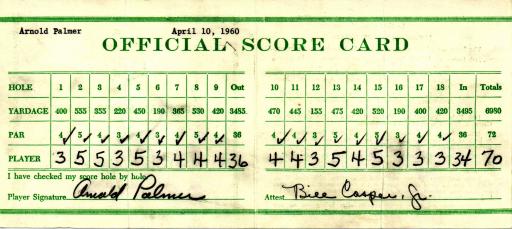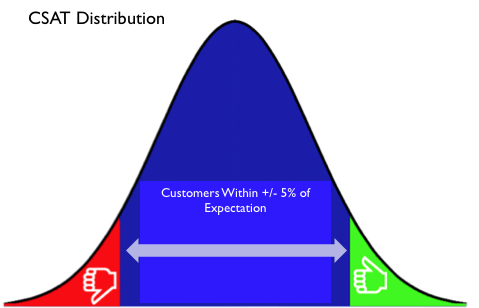 “A Tradition like no other”…
“A Tradition like no other”…
Well, folks, it’s “Masters Week” once again, the time of year when Augusta, that little town in southern Georgia, comes to life in an awe inspiring array of colors and sounds that usher in the early days of spring, and the beginning of another golf season. From the proud magnolias and tall pines, to the brilliant display of azaleas and dogwoods, the setting becomes an iconic announcement that spring has well and truly arrived.
Add to that the flurry of colors that will characterize this year’s fashion statements by golf’s superstars, and you have the setting for spring’s equivalent of the Superbowl. As Jim Nantz of CBS will say repeatedly throughout this week’s broadcast, the Masters is, most definitely, “a tradition like no other!”
I know there are those who probably couldn’t care less about the game of golf, (see my friend Brian Kenneth Swain’s comedic golf essay on the nonsense of it all). For these folks, our fixation on watching the flight patterns of a tiny white ball, no matter how inspiring the backdrop, is about as interesting as a marathon birdwatching event. In this context, some might even find it repulsive, because inside this metaphor the birds are white and the measure of success is how hard we can hit them and how fast we can stuff them into 18 tiny holes. If this is you, you might want to fast forward through this post and leave the golf analogies for someone who actually gives a damn.
For some, it’s all about the theater…
For many, this time of year is to golf what opening day is to baseball and the fall chill is to football. But unlike baseball and football, the Masters golf tournament often captures the attention of those who would not normally proclaim themselves to be actual fans. Over the four days of the Masters, most will find themselves sitting down to watch at least some portion of the event. Even the many golf widows like my wife who admittedly have no interest in the game, and whose passion for sports is limited to “Superbowl commercial viewing” will even find time to enjoy a few holes of this springtime fiesta.
But for others, it’s much more than that…
For those in the latter camp, myself included, golf has taken on a somewhat spiritual meaning. You don’t have to be a professional golfer to let this kind of obsession bring you into its grasp. And once it has you, the meaning of golf extends well beyond the beauty of the day, the dynamics of the tournament, and sometimes beyond the game itself. Before long, we find ourselves exploring the many parallels between the game of golf and circumstances in our everyday lives. And just to prove that I am not alone in this crazy obsession, just look at the number of books that have been written and sold on the non-technical aspects of the game. I can vouch for this because one entire shelf of my home library is dedicated to books on golfing implications on everything from mental attitude to overall relationships and life skills.
 As crazy as it may sound, though, I’m not alone in these sorts of interpretations and extrapolations. Perhaps it’s because so many of us overachievers are such underperformers at the game itself, and hence are forced to seek out other meanings to rationalize the time and interest we dedicate to the sport. But I suspect it’s more than that, given that the writings of those far more experienced and respected in the game assert similar observations. One of my favorite books is called “Golf is Not a Game of Perfect” (and the sequel, “Life is Not a Game of Perfect”) written by a famed sports psychologist Bob Rotella, seems to give genuine legitimacy to this perspective.
As crazy as it may sound, though, I’m not alone in these sorts of interpretations and extrapolations. Perhaps it’s because so many of us overachievers are such underperformers at the game itself, and hence are forced to seek out other meanings to rationalize the time and interest we dedicate to the sport. But I suspect it’s more than that, given that the writings of those far more experienced and respected in the game assert similar observations. One of my favorite books is called “Golf is Not a Game of Perfect” (and the sequel, “Life is Not a Game of Perfect”) written by a famed sports psychologist Bob Rotella, seems to give genuine legitimacy to this perspective.
The connection between your golf game and “managing business performance”…
For those of you who know me professionally and personally, it’s probably not surprising to find yet another post that integrates golf with the discipline of performance management. Combine my passion for the game, my ability to draw parallel observations between the game and life experiences, and my everyday profession, and …well…did you expect anything else this week?
But rather than pontificate on one dimension of this relationship (like I’ve done in other posts on “performance sustainability” and the importance of “progress over perfection“)…I’ve elected to provide just a few thoughts on various aspects of good performance management systems, for which I believe the game of golf has key implications.
So without further adieu, lets “tee off”—
On Vision-
Perhaps no other sport speaks to the importance of vision as golf does. We see this at both the player level, and in the design of the venues on which they display their talent. Anyone who has walked a great golf course, whether Augusta or any of the other marvelous creations like St. Andrews, Pebble Beach, Pinehurst, or the myriad of other golf wonders of the world,” is obliged to respect the vision and imagination that guided their designers and architects. They are much like artists, only instead of painting on canvas or sculpting physical structures, they perform their craft on acres of often undeveloped earth. If you’ve never seen one of these venues, tune into CBS and have a look this weekend. Even the environmentalists in the crowd have to acknowledge the beauty of it all, not only in the landscape, but also in the variety of wildlife that is so prevalent in the audio aspect of the broadcast.
I liken the golf course to the business model that your staff operates within. A great one will not only possess creativity and uniqueness, but will also provide the right level of challenge to truly engage your “players” and allow the great ones to succeed.
On imagination and creativity-
 This apparent genius of great golf course design should not be especially surprising, given that most golf architects were good players to begin with. After all, it was a true legend of the game whose imagination and passion went into creating Augusta. Imagination is a requisite skill and competency that all good golfers must develop and nurture. And some of it is innate . “Visualization” is often the word chosen to describe what a player does before a key shot , in that he visualizes every aspect of the shot, from the ball strike to the trajectory, landing spot and resulting ball “behavior on the surface when it lands”. Not surprisingly, good golf courses bring out the creativity in good golfers, and nowhere will this be more evident than on the lush fairways and undulating greens of Augusta National.
This apparent genius of great golf course design should not be especially surprising, given that most golf architects were good players to begin with. After all, it was a true legend of the game whose imagination and passion went into creating Augusta. Imagination is a requisite skill and competency that all good golfers must develop and nurture. And some of it is innate . “Visualization” is often the word chosen to describe what a player does before a key shot , in that he visualizes every aspect of the shot, from the ball strike to the trajectory, landing spot and resulting ball “behavior on the surface when it lands”. Not surprisingly, good golf courses bring out the creativity in good golfers, and nowhere will this be more evident than on the lush fairways and undulating greens of Augusta National.
In our professional environments, we have to remember that there is a limit to what tactical skills and training can produce. Great performance is often the combination of near flawless execution on the basic skills (which certainly can be taught and measured), along with an added dose of creativity and imagination that often can’t.
On goal setting-
One thing that is always impressive to watch is the way in which professional golfers approach their goals. While most approach each tournament with the goal of winning, this happy outcome rarely occurs week in and week out, since there are not just two competitors but often over a hundred. Thus, if this were their only goal, we’d see a lot of disappointed and demoralized performers. So what happens when a player enters a Sunday several strokes back and it is clear that victory will have to wait for another week? Their perspective simply changes. Most good golfers achieve an excellent balance between short and long term goals, and when some objectives become temporarily out of reach, these individuals have an uncanny ability to shift gears and focus instead on other goals that are just as important to their career success. Sometimes it will be refocusing to the number of career wins, sometimes it’s the overall tour ranking, and sometimes it’s just, well, improving on one specific skill or technique they have been working to improve.
In our corporate performance framework, it is important that we design in a healthy mix of goals and targets that will guide our staff and teams. Our goals should be both short and long term, and should cover various aspects of our performance. And while these should be firm, they also must have some “flex” built in so that success and failure are not binary in nature. For me, the concept of balance in the balanced scorecard goes way beyond having adequate coverage of objectives and goals, and gets to the overall balance and flexibility of the “system.”

On metrics-
I can’t think of many sports where there are metrics and statistics for just about every aspect of your game and playing experience. And every good golfer uses most of these to effectively navigate every part of their game. I’ve never seen a sport with as much focus and transparency as golf when it comes to being able to measure, track, and improve through the use of metrics and statistics. And what’s also amazing is how all of these metrics are tied to each other…from leading indicators like % fairways hit, greens hit in regulation, sand saves, etc…, to result indicators like the stroke count on a specific hole, to the net score on a round, to tournament and season results.
Managers need to really think about their operations in a similar context. Do I have the right metrics that ultimately translate to outcomes desired? Do I actively use the metrics to navigate by? Do I set targets deliberately, or do I aimlessly monitor performance against the absence of desired performance aspirations?
On managing “the game”-
A golf round, whether for amateur or professional, can be both an emotional and trying experience. Just listen to the post-round interviews this week and you’ll hear numerous players describe how they “grinded” through a round, having to endure disappointment and distress while patiently waiting for their “game” to return. I recently read an interview with a college golf coach who says the main thing they look for in junior golfers is how they recover from strings of bad play; in essence, can they mentally recover from the demoralizing effect of three or four bad holes, bad rounds, or bad seasons that characterize the proverbial slump. This requirement is present in most sports, but with golf, that mental pressure, present and highly visible, is on with every shot on every hole. Being able to recalibrate and adjust is critical, not only in their play, but in their attitude and confidence levels they carry throughout the round.
While we must have the ability to reward and promote great performance, and routinely exit non-performers from the business, we must also teach the organization how to manage through slumps. The capacity to do this is both a tactical (in terms of being able to adjust expectations, targets, and strategies to match the environment), and a cultural dynamic and competence in terms of being able to “manage through” failures and consistently harvest the lessons that can come from them.

On consistency-
Earlier this year, as I watched some of the opening tournaments of the season, I had the distinct impression that I was witnessing a true ” changing of the guard” so to speak. In the 90’s we witnessed a tidal shift when Tiger reset the bar, essentially distancing the entire field of golfers that competed at that time. Just as Hogan referred to Nicklaus in his prime as “playing a game with which he was not familiar,” many began to refer to Tiger the same way. But given Tiger’s slump, and the inconsistent play of others from the same class, I began to question whether the new class of “young guns “were beginning to displace them.
But now with the season in full swing, we are seeing great play emerge from all corners. Amidst the strong play from the game’s new “young guns “, the older icons of the game like Fred Couples, and others who have long been written off by the golf pundits as a legitimate threat, are frequently dazzling us with strong performances. So rather than signaling another transition or sea change, I think we are simply seeing the emergence of the great equalizer- a leveling of the playing field that is free of any single dominant player. Today, it seems great players only win 2-3 events every season/year (not 10+) , and those wins are based on truly brilliant displays of technical competence and creativity. The real mark of a champion now appears to be generating those 2-3 wins year in and year out without fail, in essence creating a portfolio of wins that transcends decades, rather than a few dominant tournaments or seasons.
We’ve seen this play out in business as well. Our performance measures and indicators of success should be built to reward short-, mid- and long-terms success. The failures of Ebers, Maddow and Lay demonstrate both the flawed logic and the risks of just a short term oriented strategy. Once again, the balanced scorecard must not only transcend the types of measures, but also the horizon and depth of ambition that will drive the aspiration of consistency in performance excellence.
Well, I suspect there are many other examples of these kind of parallels, but rather than list all of them here, I’ll invite you to chime in with yours as you watch the events of the week unfold. For any of you that are like me, these will jump out at you as you witness the ups and downs of the four days, and the emergence of a new Master’s champion.
I wish all of you a happy Masters week, and I hope you enjoy the theater this weekend will bring as your senses are dazzled through the screens of your HD TV!!!
-b
Author: Bob Champagne is Managing Partner of onVector Consulting Group, a privately held international management consulting organization specializing in the design and deployment of Performance Management tools, systems, and solutions. Bob has over 25 years of Performance Management experience and has consulted with hundreds of companies across numerous industries and geographies. Bob can be contacted at bob.champagne@onvectorconsulting.com










 While they were few and far between, there were failures and successes on “the fringes” of the distribution. I’ve shown a simple example of what I mean, although I believe actual research on a broader set of experiences would probably show that the distribution is anything but “normal” /gaussian (i.e. these days it is likely skewed to the left assuming customers still have some semblance of expectation (hope) of good service, which of course, is debatable (I’ll leave that for another post).
While they were few and far between, there were failures and successes on “the fringes” of the distribution. I’ve shown a simple example of what I mean, although I believe actual research on a broader set of experiences would probably show that the distribution is anything but “normal” /gaussian (i.e. these days it is likely skewed to the left assuming customers still have some semblance of expectation (hope) of good service, which of course, is debatable (I’ll leave that for another post).



